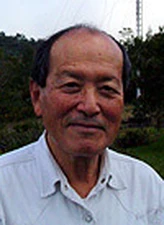Keiiti Aki

The 2005 Beno Gutenberg Medal is awarded to Keiiti Aki for his combination of theoretical, experimental, and analytical contributions to seismology, and his outstanding ability as a teacher.
Keiiti Aki is a pioneer in many fields of seismology. He established scaling laws for a broad range of phenomena in seismology and seismotectonics. He initiated new seismological analyses encompassing earthquake source, and structure and dynamics of the Earth. He made major enhancement of predictive understanding of earthquakes linking geodynamic models and non-linear dynamics models. His leadership in developing new research programs in seismology and his vision for integrated seismological research have been felt around the world. Prof. Aki’s scientific career in the past fifty years may be divided chronologically in four geographic centers. From 1952 to 1966, Aki was mostly at the Tokyo University. His first published paper (in English, 1954) was on “Quantitative prediction of earthquake occurrence as stochastic phenomena” based on earthquake catalog data. He soon realized the inadequacy of catalog data available at that time, and proposed that monitoring the more numerous microearthquakes COULD be an important element in earthquake prediction research. HIS IDEA was subsequently incorporated in the Japanese program for earthquake prediction in the beginnings of 1960’s. In 1966, Aki moved to the United States and joined the MIT faculty as a Professor of Geophysics, and became a mentor to a large number of students and postdocs. He also spent summers working with colleagues all over the world. In 1984, Aki moved to USC, Los Angeles, in order to be close to Californian earthquakes. He was responsible for the establishment of the Southern California Earthquake Center, where Aki’s vision for integrated research on earthquakes has been realized by scientists and engineers in many disciplines working together. In 1995, Aki moved to La Reunion (a French island in the Indian Ocean), so that he could have a volcano to study. After making excellent progress in predicting volcanic eruptions, Aki returned to the problem of earthquake prediction and is currently writing a book on it.
It is difficult to summarize the many important contributions of Aki to seismology in a short letter. His seismological achievements cover source, path and site effects over the entire frequency range of seismic waves. So, we will briefly list just a few of his important contributions (mostly developed while working with his students and colleagues) in order to show that Aki is one of the finest teachers and has greatly influenced many seismologists: (1) Earthquake Source Studies; (2) Seismic Tomography; (3) Coda and Scattering; (4) “Quantitative Seismology”.
In Aki’s original research he has covered an extremely broad range of problems in seismology. His creativity in approaching topics at the forefront of seismology is based on his invention of new experiments blended with a superb mastery of the theoretical background. The best evidence is his two-volume treatise “Quantitative Seismology” – co-authored with Paul Richards. It has set THE standard in seismology teaching and advanced research since 1980. Today, it is required reading for advanced classes in seismology and geophysics, and has been the most frequently cited book in seismology since its publication.
